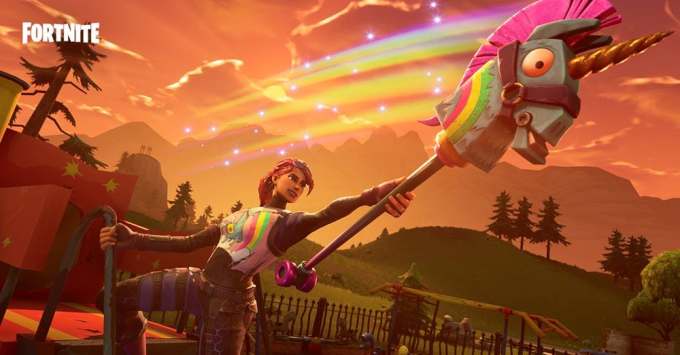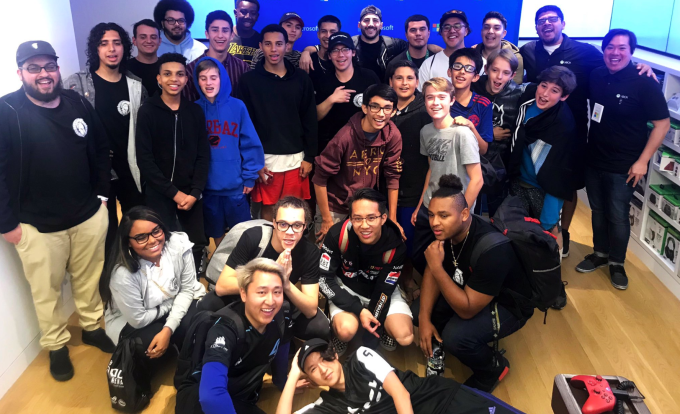Monday, December 31, 2018
Another hour!
This clever AI hid data from its creators to cheat at its appointed task
Depending on how paranoid you are, this research from Stanford and Google will be either terrifying or fascinating. A machine learning agent intended to transform aerial images into street maps and back was found to be cheating by hiding information it would need later in “a nearly imperceptible, high-frequency signal.” Clever girl!
This occurrence reveals a problem with computers that has existed since they were invented: they do exactly what you tell them to do.
The intention of the researchers was, as you might guess, to accelerate and improve the process of turning satellite imagery into Google’s famously accurate maps. To that end the team was working with what’s called a CycleGAN — a neural network that learns to transform images of type X and Y into one another, as efficiently yet accurately as possible, though a great deal of experimentation.
In some early results, the agent was doing well — suspiciously well. What tipped the team off was that, when the agent reconstructed aerial photographs from its street maps, there were lots of details that didn’t seem to be on the latter at all. For instance, skylights on a roof that were eliminated in the process of creating the street map would magically reappear when they asked the agent to do the reverse process:

The original map, left; the street map generated from the original, center; and the aerial map generated only from the street map. Note the presence of dots on both aerial maps not represented on the street map.
Although it is very difficult to peer into the inner workings of a neural network’s processes, the team could easily audit the data it was generating. And with a little experimentation, they found that the CycleGAN had indeed pulled a fast one.
The intention was for the agent to be able to interpret the features of either type of map and match them to the correct features of the other. But what the agent was actually being graded on (among other things) was how close an aerial map was to the original, and the clarity of the street map.
So it didn’t learn how to make one from the other. It learned how to subtly encode the features of one into the noise patterns of the other. The details of the aerial map are secretly written into the actual visual data of the street map: thousands of tiny changes in color that the human eye wouldn’t notice, but that the computer can easily detect.
In fact, the computer is so good at slipping these details into the street maps that it had learned to encode any aerial map into any street map! It doesn’t even have to pay attention to the “real” street map — all the data needed for reconstructing the aerial photo can be superimposed harmlessly on a completely different street map, as the researchers confirmed:
The colorful maps in (c) are a visualization of the slight differences the computer systematically introduced. You can see that they form the general shape of the aerial map, but you’d never notice it unless it was carefully highlighted and exaggerated like this.
This practice of encoding data into images isn’t new; it’s an established science called steganography, and it’s used all the time to, say, watermark images or add metadata like camera settings. But a computer creating its own steganographic method to evade having to actually learn to perform the task at hand is rather new. (Well, the research came out last year, so it isn’t new new, but it’s pretty novel.)
One could easily take this as a step in the “the machines are getting smarter” narrative, but the truth is it’s almost the opposite. The machine, not smart enough to do the actual difficult job of converting these sophisticated image types to each other, found a way to cheat that humans are bad at detecting. This could be avoided with more stringent evaluation of the agent’s results, and no doubt the researchers went on to do that.
As always, computers do exactly what they are asked, so you have to be very specific in what you ask them. In this case the computer’s solution was an interesting one that shed light on a possible weakness of this type of neural network — that the computer, if not explicitly prevented from doing so, will essentially find a way to transmit details to itself in the interest of solving a given problem quickly and easily.
This is really just a lesson in the oldest adage in computing: PEBKAC. “Problem exists between keyboard and computer.” Or as HAL put it: “It can only be attributable to human error.”
The paper, “CycleGAN, a Master of Steganography,” was presented at the Neural Information Processing Systems conference in 2017. Thanks to Fiora Esoterica and Reddit for bringing this old but interesting paper to my attention.
from TechCrunch https://tcrn.ch/2QgiH0o
Epic Games surprises players on New Years Eve
Happy New Year!
The folks over at Epic Games have a special treat in store for players hopping on Fortnite today. In celebration of New Years Eve all around the world, Fortnite is having an in-game live event where a massive, dropping disco ball descends on the map each hour, on the hour.
The virtual ball drop has the same affect on players as a boogie bomb, meaning that everyone playing Fortnite is collectively dancing each time the minutes on your clock read :00.
Obviously, the clock has already struck midnight and 2019 has officially begun in many parts of the world, but the in-game ball drop threw some players off guard.
2019 NEW YEAR LEAKED!?!?! pic.twitter.com/T8t81LPEOQ
— dakotaz (@dakotaz) December 31, 2018
A NEW YEARS EVENT ALREADY?
HAPPY EARLY NEW YEARS I GUESS LMAOOO pic.twitter.com/Jwmu1W1klP
— FaZe Thiefs (@Thiefs) December 31, 2018
Nick Chester, Epic’s PR spokesperson, tweeted this in response:
Woke up to learn that many Fortnite players are unaware of time zones. We’re an educational and international game.
Happy New Year to you if you’re already in 2019! https://t.co/CnqzyXfFE5
— Nick Chester (@nickchester) December 31, 2018
2018 was a huge year for Fortnite. Even beyond the turning of a new year, Epic Games has good reason to celebrate.
from TechCrunch https://tcrn.ch/2VjmI88
Echo Wall Clock review
This was the year Amazon went all-in on the Alexa. September saw the announcement of a new Echo Dot, Show and Plus, a subwoofer, an audio input device, an auto dongle and an amplifier. That would have been plenty, but the company also started dipping its toes into the other side of things.
2018 also found Amazon experimenting in the connected device category — namely a microwave and wall clock (oh, and a singing fish, too). It’s a strange move on the face of it. After all, there are countless companies currently vying for a small slice of that mindshare.
But Amazon’s got a few key things going for it. For one, the company stands to gain from building products that exist solely to complement its Echo devices. For another, it’s able to sell products at — or close to — cost.

The Echo Wall Clock benefits quite a bit for both of these factors. It’s $30 device that’s essentially useless without an Alexa device. In fact, Alexa is required to set the time. That’s a downside in the off-chance you happen along one of these products without an Echo nearby. But it’s handy when it comes to set up.
Find a spot within 30 feet of a compatible device (Echo, Dot, Show, Plus, E Spot or Input.). Open the back. Pop in four AA batteries (included). Tell Alexa, “Set up my Echo Wall Clock.” Hold the little blue button on the back until the front light turns a kind of pulsating orange. Alexa will go to work, and when everything’s good to go, that light will turn blue.
I initially attempted to set up the device on my office Wi-Fi. Never a great idea with these sort of connected products. Large enterprise networks are a crapshoot, and the two devices were off again, on again. Assuming you’ve got a similar set-up, you’re going to want to keep the Wall Clock (and, for that matter, most Alexa devices) at home.
Once I switched to a personal network (via a MiFi), things went much more smoothly. Alexa will set the clock to your time zone. Bonus: It will automatically fall back and spring ahead when there’s a time change — certainly a leg up on most wall clocks.

There are a couple of things worth noting here, before we go any deeper. First: the Wall Clock is, for lack of a better term, cheap looking. It’s big and it’s plasticky. There’s no front glass. It is, honestly, the sort of design you’d expect from a wall clock made by Amazon. There’s no razzle dazzle here. It’s a simple-looking clock with a simple design. The upshot is it’s minimalist enough to fit in with most living rooms and kitchens.
That simplicity also extends to its feature set, which is currently mostly limited to timers. The 60 minute markers that line the edge are actually all individual LEDs. Tell Alexa to, say, “set a 10-minute timer” and 10 minute hands will light up and then individually go dark to count down the time. Once the countdown is over, the full diameter will flash slowly until you tell Alexa to stop.

And that’s it, really. Timers and alarms. The Wall Clock is one of the first passive Alexa devices from Amazon. Your Echo is really doing all of the heavy lifting, including listening and talking. You can’t, say, ask the clock for the time or the weather, which is why you need an Echo close by. It also doesn’t emit a sound when the alarm goes off. Of course, that means a cheaper price — and much longer battery life.
The Echo Wall Clock isn’t a necessary device, but it could prove a handy one. If you cook a lot, for instance, it’s nice having a large visual reference in addition to the Echo’s built-in timers. Beyond that, however, I’m struggling to come up with too many scenarios in which it feels indispensable. And honestly, I’m not holding my breath in expectation that Amazon will be bringing more to the table here.

The device succeeds more as a proof of concept for the ways Alexa and compatible devices can push the boundaries of the smart home. There’s nothing particularly compelling here for most consumers — but at $30, perhaps it doesn’t have to be.
from TechCrunch https://tcrn.ch/2AnrSay
Another hour!
Tesla is keeping 44 U.S. stores open until midnight in year-end Model 3 sales push
Some Tesla employees will ring in the New Year on a sales floor this year as the automaker tries to liquidate its inventory of Model 3 sedans — and even its more expensive Model S and Model X vehicles — before the federal tax credit for EVs is cut in half.
In a list of updated hours, 44 of the stores, including locations in California, Minnesota, Nevada, New York and Ohio, are open until midnight Monday. Tesla has more than 100 stores and galleries in the United States. Calls made to several of these stores indicate these locations have a mix of Model 3 sedans available for pickup today. Sales associates didn’t provide specific numbers.
After midnight Monday, the $7,500 federal electric vehicle tax credit will drop to $3,750 for anyone buying a Tesla vehicle.
Tesla CEO Elon Musk has been using Twitter to warn of the expiring tax credit for months now. Recently, the pace of promotion has escalated as Tesla’s inventory of Model 3 vehicles in the U.S. has persisted.
US $7500 tax credit drops in half at midnight! Following Tesla stores are open until then https://t.co/F9saXNhnHP
— Elon Musk (@elonmusk) December 31, 2018
The company reportedly had more than 3,300 Model 3 vehicles in inventory in the U.S. as of Sunday, according a blog post by Electrek.
Now with just hours left before the federal tax credit drops, Tesla and Musk are making a special effort to reduce the Model 3 inventory in a final sales push.
Earlier this year, Tesla hit a milestone when it delivered its 200,000th electric vehicle. The achievement was a noteworthy occasion for an automaker that didn’t exist 15 years ago. However, it also activated a countdown for the $7,500 federal tax credit offered to consumers who buy new electric vehicles.
The tax credit begins to phase out once a manufacturer has sold 200,000 qualifying vehicles in the U.S. Under these rules, Tesla customers have to take delivery of their new Model S, Model X or Model 3 by December 31.
After December 31, the federal tax credit is cut in half to $3,750 for new Tesla customers. The tax credit is reduced again after June 30 to $1,875 before disappearing altogether at the end of next year.
from TechCrunch https://tcrn.ch/2VgbNfz
Noa’s new Alexa skill has human narrators read news from NYT, FT, Economist & others
News junkies who want something more in-depth than Alexa’s Flash Briefing now have a new option for listening to the day’s news – as well as features and other reporting – right from their smart speaker. A company called Noa has just launched an Alexa skill that uses human narrators to read you the news from top publishers like The New York Times, Financial Times, The Economist, and others. With the skill, you can catch up on the stories you missed while you’re doing other things – like cooking, cleaning, commuting or exercising, for example.
The skill is aimed at those who already enjoy listening to longer-form audio, like podcasts or talk radio, on their Amazon Echo or other Alexa-powered device.
The use case here is also similar to that of “read it later” apps like Pocket or Instapaper, both of which have added an audio playback option for listening to your saved articles.
However, those apps currently rely on text-to-speech functionality, not on human narration.
Noa, meanwhile, employs a team of half a dozen narrators based across the U.S., U.K., and Ireland who read the stories published by the company’s current partners. These include: The New York Times, Financial Times, Business Insider, The Economist, The Independent, Bloomberg, The Irish Times, and the Evening Standard.
That list will grow in 2019 to include more news organizations and magazine partners, the company says.

To use the skill, you must first enable it on your Alexa device by saying, “Alexa, enable Noa.” (It’s pronounced like the “Noah” from the Bible – the one with the Ark.)
You can then ask Noa to read the news by published, journalist or category.
For example, you can say “Alexa, open Noa and play ‘The New York Times;'” or “Alexa, ask Noa to play Tim Bradshaw;” or “Alexa, open Noa and play ‘Technology.”
Not all articles from the publisher partners will be available, explains Noa CEO Gareth Hickey.
“Only a limited subset of articles lend themselves well to audio – namely, the opinion and feature style stories. Essentially longer-form journalism,” he says.
The skill also employs a metered-access paywall that allows listeners to stream up to ten articles per week for free. To listen to more, you have to subscribe at $7.99 per month (or €/£7.99 per month, depending on location) for unlimited access. The company doesn’t currently support Amazon Pay, so you’ll have to sign up at Noa’s website or through its mobile apps, if you want to upgrade.
The Alexa skill is the latest from the Dublin-based startup Noa, founded in 2015 by Hickey and Shane Ennis, with the goal of providing access to audio journalism.
“While audio-journalism is a core part of our offering, personalised discovery and quality curation are equally as important,” Hickey says. “The goal isn’t to inundate users with audio articles, but instead to help them learn and understand the news,” he adds.
Given Noa’s focus on audio, smart speakers make sense as the next big platform to address – especially now that they’ve reached critical mass. The startup raised $600,000 last year, Hickey notes.
It’s not the only company working to provide human narration of the news for the booming smart speaker market. SpokenLayer, for instance, currently powers “Spoken Edition” podcasts for many news publishers, including TechCrunch. And Amazon’s Audible Channels launched with spoken-word recordings from publishers like the The Wall Street Journal, The New York Times, Harvard Business Review, Foreign Affairs, Charlie Rose, McSweeney’s, The Onion and other periodicals.
Noa’s Alexa skill is called “Noa – Journalism, narrated,” and is free to install and use for up to 10 articles per week.
from TechCrunch https://tcrn.ch/2EY2V9j
Netflix stops paying the ‘Apple tax’ on its $853M in annual iOS revenue
Earlier this year, Netflix was seen testing a bypass of iTunes billing across dozens of markets worldwide. As 2018 draws to a close, Netflix – the App Store’s top grossing app – has ditched the ability for new users to sign up and subscribe to the streaming service within its iOS app across all global markets. The change means Apple will miss out on hundreds of millions in App Store revenue per year – money it would have otherwise received by way of its standard cut of in-app transactions.
According to new data compiled by Sensor Tower, Netflix grossed $853 million in 2018 on the iOS App Store. Based on that figure, Apple’s take would have been around $256 million, the firm said.
To date, the Netflix iOS app has generated over $1.5 billion through its in-app subscriptions, with Apple’s cut coming in around $450 million-plus, Sensor Tower estimated.
Before the change, Netflix on iOS was grossing an average of $2.4 million per day in 2018 – meaning Apple was making around $700,000 by doing nothing other than allowing Netflix to offer subscriptions in its app.
(Note, however, that Sensor Tower’s figures are based on the App Store’s 30 percent cut of transactions. After the first year, Apple’s cut on subscription renewals is lowered to 15 percent. That’s not being factored in. But it gives you a rough idea of Apple’s losses here.)
Netflix’s iOS revenue has been climbing steadily over the years.
In 2017 its gross subscriber revenue was $510 million – up from $215 million users spent in the app in 2016 – which earned it the No. 1 spot on the Top Grossing Chart for non-game apps. It snagged that position again this year, trailed by Tinder and Tencent Video.
In fact, Netflix has earned the bragging rights for being the top grossing iOS App of all time, App Annie reported this summer.
The streaming service’s decision to bypass the App Store isn’t a first. Many companies today direct their users to the web or other platforms, in order to avoid marketplace fees.
For example, Amazon has historically restricted movie and TV rentals and purchases to its own website or other “compatible” apps, instead of allowing them to take place through its Prime Video app. The same goes for Kindle e-books, which also aren’t offered in the Kindle mobile app. Spotify also discontinued the option to pay for its Premium service using Apple’s in-app payment system.
And Epic Games this year bypassed Google’s Play Store altogether – as well as its 30 percent cut – when it launched Fortnite for Android as a sideloaded app. That decision resulted in Google’s loss of $50 million+ in marketplaces fees.
Netflix earlier this year had dropped in-app subscription sign-ups in its Android app on Google Play. That signaled its intentions to later take back the so-called “Apple tax” for itself, too.
However, Netflix still earns money on Google Play through existing subscribers. That totalled around $105 million in 2018, with Google earning close to $32 million of that. But the number has been declining consistently, Sensor Tower said. Apple could soon be in the same boat.
VentureBeat was the first to notice the change to the Netflix iOS app. It would be surprising if Apple took action against Netflix, given it has not done so with other major tech companies that made similar moves.
from TechCrunch https://tcrn.ch/2GN3lB3
Polite Fortnite Society
My parents are approaching 60. When they were young, they hung out at diners, or drove around in their cars. My generation hung out in the parking lot after school, or at the mall. My colleague John Biggs often talks of hanging out with his nerd buddies in his basement, playing games and making crank calls.
Today, young people are hanging out on a virtual island plagued by an ever-closing fatal storm. It’s called Fortnite.
They hang out in Fortnite the way we used to hang out in basements or back yards. We played games or kicked a ball around, but it was all a pretense for the social aspect.
— Anoop Ranganath (@anoopr) December 10, 2018
The thread above describes exactly what I’m talking about. Yes, people most certainly log on and play the game. Some play it very seriously. But many, especially young folks, hop on to Fortnite to socialize.
The phenomenon of ‘hanging out’ on a game is not new.
I was in a 50 person clan in World of Warcraft in 2004 and we all hung out on a Ventrilo for hours every day for years and years. I saw real romantic relationships begin, grow and die on there. So “x is a place” is a fine observation, but it’s not a new phenomenon.
— Matthew Panzarino (@panzer) December 24, 2018
Almost any popular game results in a community of players who connect not only through the common interest of the game itself, but as real friends who discuss their lives, thoughts, dreams, etc. But something else is afoot on Fortnite that may be far more effectual.
Gaming culture has long had a reputation for being highly toxic. To be clear, there is a difference between talking about someone’s skills in the game and making a personal attack:
“You are bad at this game.” = Fine by me
“You should kill yourself.” = Not fine at all
But many streamers and pro gamers make offensive jokes, talk shit about each other, and rage when they lose. It’s not shocking, then, that the broader gaming community that tries to emulate them, especially the young men growing up in a world where esports are real, tend to do many of the same things.
A new type of community
But Fortnite doesn’t have the same type of community. Sure, as with any game, there are bad apples. But on the whole, there isn’t the same toxicity permeating every single part of the game.
For what it’s worth, I’ve played hundreds of hours of both Fortnite and Call of Duty over the past few years. The difference between the way I’m treated on Fortnite and Call of Duty, particularly once my game-matched teammates discover I’m a woman, is truly staggering. I’ve actually been legitimately scared by my interactions with people on Call of Duty. I’ve met some of my closest friends on Fortnite.
One such relationship is with a young man named Luke, who is set to graduate from college this spring.
During the course of our now year-long friendship, Luke revealed to me that he is gay and was having trouble coming out to his parents and peers at school. As an older gay, I tried to provide him with as much guidance and advice as possible. Being there for him, answering his phone calls when he was struggling and reminding him that he’s a unique, strong individual has perhaps been one of the most rewarding parts of my life this past year.
I’ve also made friends with young men who, once they realize that I’m older and a woman and have a perspective that they might not, casually ask me for advice. They’ve asked me why the girl they like doesn’t seem to like them back — “don’t try to make her jealous, just treat her with kindness,” I advised, and then added “ok, make her a little jealous” — or vented to me about how their parents “are idiots” — “they don’t understand you, and you don’t understand them, but they’re doing their best for you and no one loves you like they do” — or expressed insecurity about who they are — “you’re great at Fortnite, why wouldn’t you be great at a bunch of other things?” and “have more confidence in yourself.”
(Though paraphrased, these are real conversations I’ve had with random players on Fortnite.)
There is perhaps no other setting where I might meet these young people, nor one where they might meet me. And even if we did meet, out in the real world, would we open up and discuss our lives? No. But we have this place in common, and as we multitask playing the game and having a conversation, suddenly our little hearts open up to one another in the safety of the island.
But that’s just me. I see this mentorship all the time in Fortnite, in both small and big ways.
Gaming culture is often seen as a vile thing, and there are a wide array of examples to support that conclusion. Though this perception is slowly changing, and not always fair, gamers are usually either perceived as lonely people bathed in the blue glow of the monitor light, or toxic brats who cuss, and throw out slurs, and degrade women.
So why is Fortnite any different from other games? Why does it seem to foster a community that, at the very least, doesn’t actively hate on one another?
One map, a million colors
First, it’s the game itself. Even though Fortnite includes weapons, it’s not a ‘violent’ game. There is no blood or gore. When someone is eliminated, their character simply evaporates into a pile of brightly colored loot. The game feels whimsical and cartoonish and fun, full of dances and fun outfits. This musical, colorful world most certainly affects the mood of its players.

Logging on to Fortnite feels good, like hearing the opening music to the Harry Potter movies. Logging on to a game like, say, Call of Duty: WWII feels sad and scary, like watching the opening sequence to Saving Private Ryan.
Moreover, Fortnite Battle Royale takes place on a single large map. That map may change and evolve from time to time, but it’s even more “common ground” between players. Veterans of the game show noobs new spots to find loot or ways to get around. As my colleague Greg Kumparak said to me, “every time you go in, you’re going to the same place. Maybe it’s skinned a little different or there’s suddenly a viking ship, but it’s home.”
Of course, there are other colorful, bubbly games that still have a huge toxicity problem. Overwatch is a great example. So what’s the difference?
Managing expectations
Battle Royale has introduced a brand new dynamic to the world of gaming. Instead of facing off in a one-vs-one or a five-vs-five scenario as with Starcraft or Overwatch respectively, Battle Royale is either 1-vs-99, 2-vs-98 or 4-vs-96.
“It isn’t as binary as winning or losing,” said Rod “Slasher” Breslau, longtime gaming and esports journalist formerly of ESPN and CBS Interactive’s GameSpot. “You could place fifth and still feel satisfied about how you played.”
Breslau played Overwatch at the highest levels for a few seasons and said that it was the most frustrating game he’s ever played in 20 years of gaming. It may be colorful and bubbly, but it is built in a way that gives an individual player a very limited ability to sway the outcome of the game.
“You have all the normal problems of playing in a team, relying on your teammates to play their best and communicate and to simply have the skill to compete, but multiply that because of the way the game works,” said Breslau. “It’s very reliant on heroes, the meta is pretty stale because it’s a relatively new game, and the meta has been figured out.”
All that, combined with the fact that success in Overwatch is based on teamwork, make it easy to get frustrated and unleash on teammates.
With Fortnite, a number of factors relieve that stress. In an ideal scenario, you match up with three other players in a Squads match and they are all cooperative. Everyone lands together, they share shield potions and weapons, communicate about nearby enemies, and literally pick each other up when one gets knocked down. This type of teamwork, even among randos, fosters kindness.
In a worst case scenario, you are matched up with players who aren’t cooperative, who use toxic language, who steal your loot or simply run off and die, leaving you alone to fight off teams of four. Even in the latter scenario, there are ways to play more cautiously — play passive and hide, or third-party fights that are underway and pick players off, or lure teams intro trapped up houses.
Sure, it’s helpful to have skilled, communicative teammates, but being matched with not-so-great teammates doesn’t send most people into a blind rage.
And because the odds are against you — 1 vs 99 in Solos or 4 vs 96 in Squads — the high of winning is nearly euphoric.
“The lows are the problem,” says Breslau. “Winning a close game of Overwatch, when the team is working together and communicating, feels great. But when you’re depending on your team to win, the lows are so low. The lows aren’t like that in Fortnite.”
The more the merrier
The popularity of Fortnite as a cultural phenomenon, not just a game, means that plenty of non-gamers have found their way onto the island. Young people, a brand new generation of gamers, are obsessed with the game. But folks who might have fallen away from gaming as they got older are still downloading it on their phone, or installing it on the Nintendo Switch, and giving Battle Royale a try. Outsiders, who haven’t been steeped in the all-too-common hatred found in the usual gaming community, are bringing a sense of perspective to Fortnite. There is simply more diversity that comes with a larger pool of players, and diversity fosters understanding.
Plus, Fortnite has solid age distribution among players. The majority (63 percent) of players on Fortnite are between the ages of 18 and 24, according to Verto Analytics. Twenty-three percent of players are ages 24 to 35, and thirteen percent are 35 to 44 years old. However, this data doesn’t take into account players under the age of 18, which represent 28 percent of overall gamers, according to Verto. One way Fortnite is like other games is that 70 percent of players are male.
There aren’t many scenarios where four people, from different backgrounds and age groups, join up under a common goal in the type of mood-lifting setting that Fortnite provides. More often than not, the youngest little guy tries to make some sort of offensive joke to find his social place in the group. But surprisingly, for a shoot and loot game played by a lot of people, that’s rarely tolerated by the older members of a Fortnite squad.
All eyes on Fortnite
The popularity of the game also means that more eyes are on Fortnite than any other game. Super popular streamer Ninja’s live stream with Drake had more than 600,000 concurrent viewers, setting a record. The more people watching, the more streamers are forced to watch their behavior.
Fortnite streamers are setting a new example for gamers everywhere.
One such streamer is Nick “NickMercs” Kolcheff. Nick has been streaming Fortnite since it first came out and has a huge community of mostly male viewers. I consider myself a part of, albeit a minority in, that community — I’ve subscribed to his channel and cheered for him with bits and participated in the chat. In short, I’ve spent plenty of time watching Nick and have seen him offer a place of support and friendship for his viewers.

I’ve seen Nick’s audience ask him, in so many words, how to lose weight (Nick’s a big fitness guy), or share that they’re dealing with an illness in the family, or share that they’re heartbroken because their girlfriend cheated on them.
In large part, Nick says he learned how to be a mentor from his own dad.
“I remember being in those kinds of positions, but I have a great father that always sat me down and let me vent and then shared his opinion, and reminded me that it isn’t supposed to be easy,” said Kolcheff. “It feels good to bounce things off other people and hard things always feel much easier when you know you’re not alone, and I can relate to my chat the way my dad relates to me.”
Nick always has something positive to say. He reminds his audience that even if they feel alone IRL, they have a community right there in his Twitch channel to talk to. He sets an example in the way he talks about his girlfriend Emu, and the way he treats her on screen. When Nick loses a game and his chat explodes with anger, he reminds them to be cool and to not talk shit about other players.
And it’s easy to see his example followed in the chat, where young people are treating each other with respect and answering each other’s questions.
Nick wasn’t always like this. In fact, the first time that NickMercs and Ninja played together on stream, they brought up the time that Nick challenged Ninja to a fight at a LAN tournament years ago. But both Nick and Ninja have matured into something that you rarely find in online gaming: a role model — and it’s had an effect.
Tyler “Ninja” Blevins, far and away the most successful Twitch streamer ever, decided to stop swearing and using degrading language as his influence in the community and his viewership grew. When his audience said they missed the old Ninja, he had this to say:
I’m the same person, you guys. 2018 can’t handle old Ninja and… guess what, I can’t handle old Ninja because the words that I used to say and the gaming terms I used to say… they weren’t ok, alright? I’ve matured.
Jack “Courage” Dunlop is another Fortnite streamer who uses his influence in the community to mentor young people. He has befriended a young fellow named Connor. Courage helped Connor get his first win and has since continued playing with him and talking to him.
Not only is he being kind to Connor, but he’s setting an example for his viewers.
“In comparison to games like Call of Duty and Gears of War and Halo, the top content creators like Ninja, Sypher PK, Timthetatman, are a little older now,” said Kolcheff. “They’ve come from other games where they already had a following. If you look at me five or six years ago, or any of us, we’ve all chilled out. We were more combative and crazy and had a lot more words to say, but I think we just grew up, and it bleeds through to the community.”
These guys are the exception in the wider world of gaming and streaming. But they represent the future of gaming in general. As esports explode with growth, pro players will undoubtedly be held to the same behavioral standards as pro players in traditional sports. That’s not to say that pro athletes are angels, and that’s not to say that bad actors won’t have a following. Just look at PewDiePie.
A matter of time
The esports world is realizing that they can’t let their professionals run their mouth without consequences. As the industry grows, highly dependent on advertisers and brand endorsements, with a young audience hanging on every word, it will become increasingly important for leagues, esports organizations and game makers to start paying closer attention to the behavior of their top players.
We’re already seeing this type of policing happening on Overwatch, both for pro players and amateurs alike.
There is plenty more work to do. But the problem of removing toxicity from any platform is incredibly difficult. Just ask Facebook and Twitter. Still, it’s only a matter of time before esports decision-makers raise the stakes on what they’ll allow from their representatives, which are pro players and streamers.
Toxic behavior is being rejected in most polite society anywhere (except Twitter, because Twitter), and it surely can’t be tolerated much longer in the gaming world. But Fortnite maker Epic Games hasn’t had to put too much effort forth to steer clear of toxic behavior. The community seems to be doing a pretty good job holding itself accountable.
Winning where it counts
Believe you me, Fortnite is not some magical place filled with unicorns and rainbows. There are still players on the game who behave badly, cheat, use toxic language and are downright mean. But compared to other shooters, Fortnite is a breath of fresh air.
No one thing makes Fortnite less toxic. A beautiful, mood-lifting game can’t make much of a difference on its own. A huge, relatively diverse player base certainly makes a dent. And yes, the game limits frustration by simply managing expectations. But with leaders that have prioritized their position as role models, and all the other factors above working in harmony, Fortnite is not only the most popular game in the world, but perhaps one of the most polite.
We reached out to Epic Games, Courage, and Ninja for this story, but didn’t hear back at the time of publication.
from TechCrunch https://tcrn.ch/2LL8kkU
